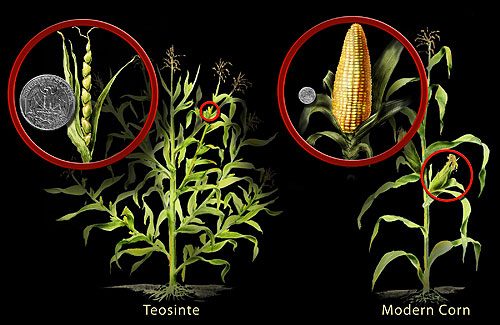According to a 2016 United Nations report, about one quarter of the world’s population produces all of the agricultural products consumed globally. As arable land grows scarcer, the efficiency of the agricultural industry is paramount to the sustainable growth of the world population. To increase crop yields at higher planting densities, researchers have looked towards genetics.
Current limitations of high-density planting include providing sufficient water and nutrients to cultivated plants as well as ensuring adequate sunlight reaches each plant’s leaves. As planting density increases, sunlight access becomes increasingly limited. This means that as more plants are grown in a limited area, the yield decreases greatly.
Professor Feng Tian at the China Agricultural University believes the key to solving this high-density planting problem in corn is locked in the genome of teosinte, a Central American grain precursor of modern-day maize. Tian and his group explored the genetic makeup of both maize and teosinte plant to determine what genes, if any, gave upright plant architecture to the two species. This upright architecture, influenced by the cellular makeup of the plant’s stems and angle of its leaves, increases the density at which maize can be effectively planted.
Tian’s lab searched for natural genes which could be used to optimize plant architecture and leaf angle by analyzing 866 various maize-teosinte plants. They identified two genes, appropriately named Upright Plant Architecture (UPA) 1 and 2. These molecules bind to DNA and block the production of another protein called ZmRAVL1, the genetic culprit of maize’s unsuitable architecture.
Since the Tian lab was able to determine a genetic cause of relaxed maize architecture and a way to stop it, the possibility of creating maize plants designed for dense planting is looking bright. “Recent advances in genomics and computational biology have further accelerated yield gains through applications in genomic selection, marker-assisted breeding and transgenic technologies,” said Stephen Dellaporta, a professor in TKTK at Yale and an expert in plant molecular genetics.
Tian suggests that the reintroduction of the UPA2 teosinte gene into modern-day maize plants could substantially improve the density at which they can be grown. This sequence of DNA, lost during the domestication of maize, could be reinserted into the DNA of current maize species to create maize-teosinte hybrids. These Frankenstein plants would then be able to thrive in dense planting patterns. With the aid of newfound gene editing technologies, the portion of the maize genome that causes relaxed architecture could be completely removed to enhance high-density yields.
The genetic understanding established by this study has opened the door to potentially increasing maize yields with genetic engineering and careful crossbreeding. Tian’s lab is already seeing promising results with some of these techniques in field trials. Under planting densities of 105,000 plants per hectare or more, teosinte-maize hybrids are able to out-compete current commercial grade maize by a significant margin.
More than merely a farmer’s conundrum, this finding has implications for the wellbeing of the entire global population. Maize is the most produced grain by weight in the world and is foundational to numerous agricultural and commercial ventures, including both the livestock industry and the production of biosynthetic materials. On top of this, population growth requires the production of more food, and environmental pressures such as climate change limit the amount of usable farming land. So, being able to increase the amount of maize harvested from fields planted at greater density is immensely important. With genetics on its side, the future of maize is looking a little taller.

